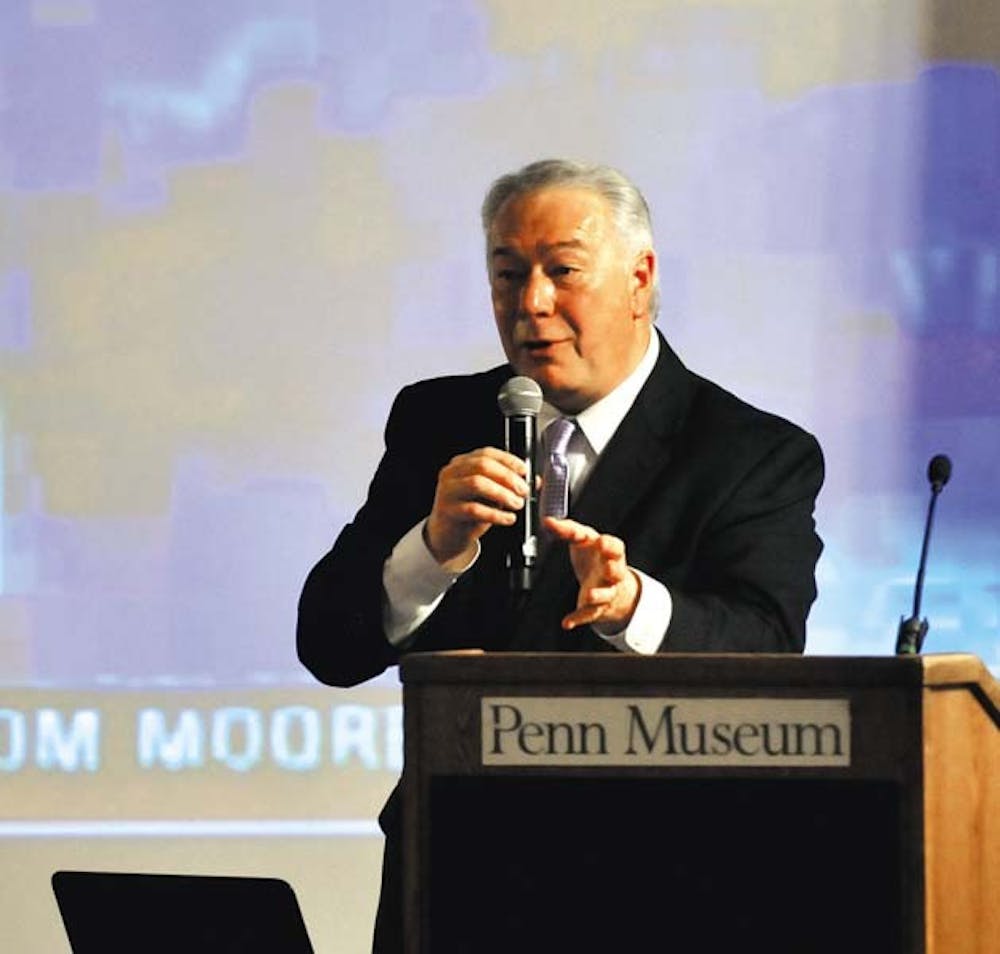
In one room of the Museum of Archaeology and Anthropology sits a 55-pound ball of polished quartz, once in the possession of a Chinese empress and stolen from the Museum in 1988.
In the auditorium directly below, the man who brought it back explained his career investigating art crimes.
Robert Wittman, a former FBI special agent and leader in the bureau’s Art Crime Team, spoke at Harrison Auditorium last night as part of the University’s “Year of Proof.” His lecture focused on his 20 years working with the Philadelphia Field Division and later with the ACT.
Wittman explained that art crimes fall into one of three categories: theft, looting and forgery. Theft involves taking artifacts from a museum — the type of art crime that shows up most in exaggerated Hollywood depictions.
Looting, on the other hand, is stealing items out of their original environment, such as an archeological site.
Wittman emphasized that looting can be even more destructive than theft. Once a piece is removed from its context, “all of our scientific and archeological information is gone, and all we have is pretty baubles,” he said.
At one point during his career, Wittman investigated and uncovered a 2,000 year-old piece of Peruvian armor stolen from a tomb. The armor currently sits in a museum unaccompanied by any information, Wittman added, to dramatize the permanent effects of looting.
Forgery is misrepresenting the origins or creator of an artifact. In the 1980s, a man named Alfredo Martinez forged Jean-Michel Basquiat paintings on a massive scale. Martinez even created fake certifications of authenticity.
Frequently, it was the audacity of the thieves in Wittman’s stories that was the most incredible. In one instance, Wittman and his team were looking for three Civil War-era swords that had gone missing from the Philadelphia Historical Society. Their investigation led them to a man who had not three but nearly 200 individual artifacts. Each of the pieces had been smuggled out, at the rate of about one piece a day, by a Philadelphia Historical Society employee.
Many of Wittman’s anecdotes and lessons were drawn from his 2010 memoir, “Priceless: How I Went Undercover to Rescue the World’s Stolen Treasures.”
College freshman Bailey Scott said that she had been drawn to the talk because she “wanted to read his book and learn about the process of investigation in law, art and crime.”
While the pieces he recovered were sometimes worth millions of dollars, Wittman believes that they have value that isn’t readily quantified.
“It’s not just money, it’s our heritage,” he said. “Every time we lose an artifact, that’s something we’re letting our grandchildren down on.”
The Daily Pennsylvanian is an independent, student-run newspaper. Please consider making a donation to support the coverage that shapes the University. Your generosity ensures a future of strong journalism at Penn.
DonatePlease note All comments are eligible for publication in The Daily Pennsylvanian.





